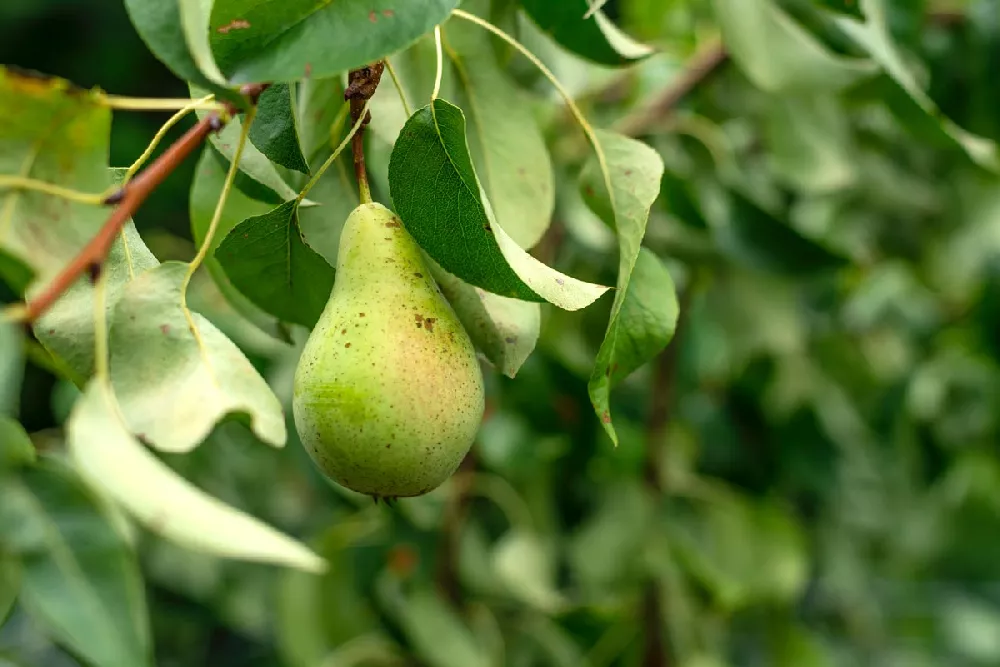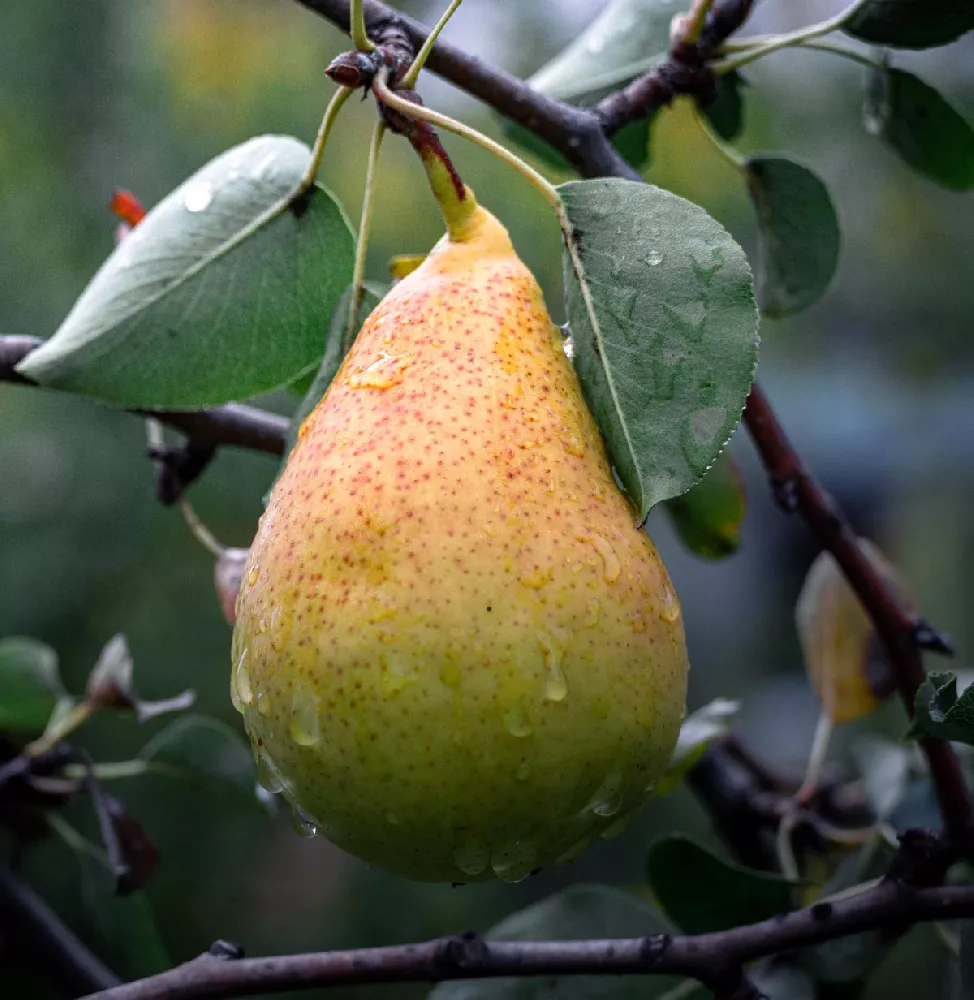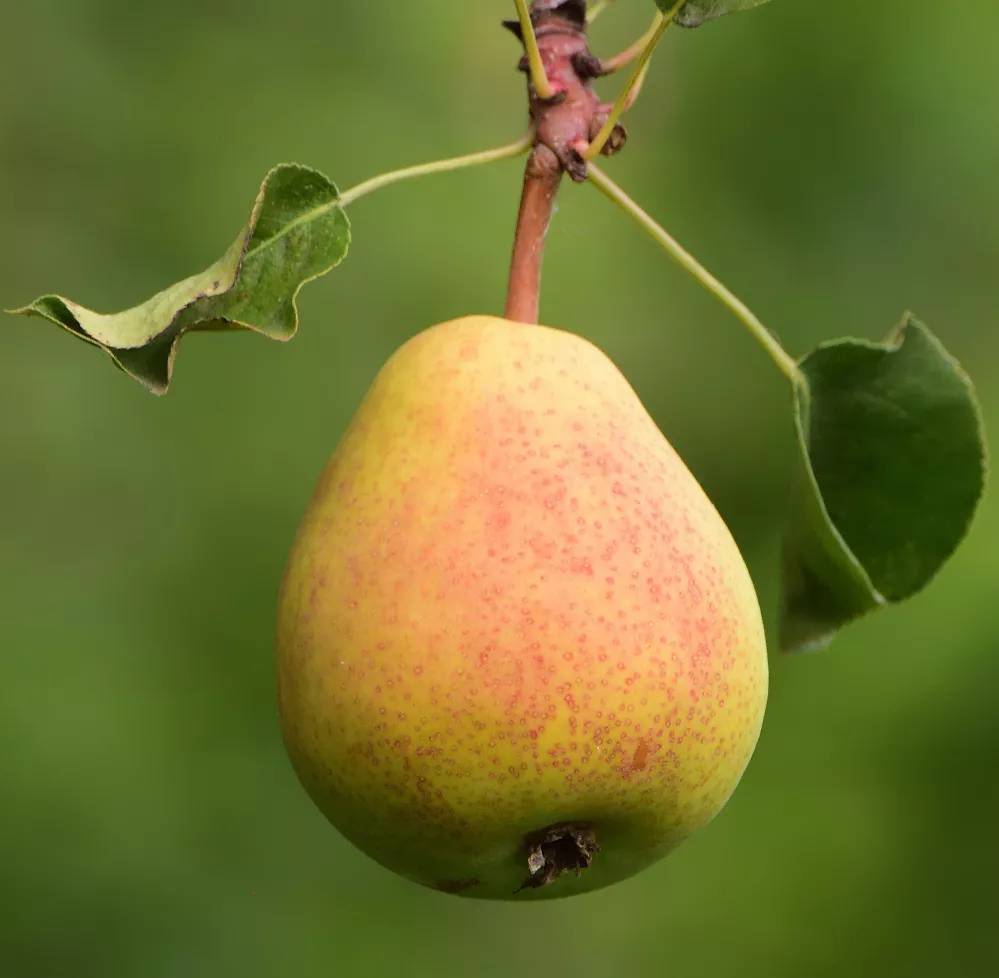- Home >
- Edible Plants >
- Bartlett Pear
Bartlett Pear for Sale - Buying & Growing Guide
- Ships in 1-2 days
- 1-Year Warranty Eligible
- Pots or accessories are not included unless specified in the product options.
Shipping Details:
Once your order is shipped, you’ll receive an email with a tracking number and estimated delivery date. Most orders ship immediately, but some items are seasonal and may only ship in spring or fall. These products are noted on the website.
If you're looking for a sure thing in your garden, the Bartlett pear tree, Pyrus communis 'Bartlett,' is a good option. It's the No. 1 favorite pear tree among dozens of cultivars in the U.S., and the millions of gardeners who own it across the globe know there are good reasons for its popularity. Those reasons include creamy white, fragrant flowers in the spring that are spectacular to see, and then, in the fall, a tree full of sweet, juicy fruit that is best enjoyed directly from the tree — but which also works well for cooking and canning purposes. Naturally ripened Bartlett pears taste nothing like the bland fruit you find in the supermarket. Here are a few more reasons why you need a Bartlett pear tree:
- They are cold-hardy to zone 5 and can be grown in a variety of soil types.
- Dark glossy green foliage makes this an attractive landscape tree throughout the growing season.
- Bartlett pear trees are reliable and productive, with large harvests each fall.
Plant Care
Sunlight

Bartlett pear trees do best in full sun — six or more hours of direct light a day.
Watering
Bartlett Pear trees need 1 to 2 inches of water a week once established; water newly planted trees every few days.
Fertilizing

Fertilize your Bartlett Pear in spring with a balanced fertilizer designed for fruit trees.
Planting and Care
Planting instructions
Site your Bartlett pear tree where it will get full sun, in fertile, well-draining soil, and preferably in a site that is shaded from prevailing winds. Unpot your sapling, and tease out any encircling roots, which can girdle the tree’s root ball and eventually kill it. Dig a hole that’s as deep as the root ball and three times as wide. Place the tree in the hole, spreading out the roots as much as possible, and, while holding it upright and steady, fill in around it with good-quality topsoil. Tamp down the soil as you go to eliminate air pockets. Water thoroughly. Apply a 2- to 3-inch layer of an organic mulch, such as bark chips, around the root zone, to conserve moisture and hinder weeds.
Watering and nutrients
Water your newly-planted tree several times a week. Once you see signs of robust new growth, you can taper back on watering. A mature tree needs 1-2 inches of water every ten days. If you’re experiencing a heat wave, give it additional water. You do not need to water your tree in winter. Fertilize your tree in spring with a balanced, slow-release fertilizer that is designed to be used on fruit trees, following package directions for application. If planted in fertile soil, you don’t need to fertilize your tree until it begins bearing fruit.
Pollination
Bartlett pear trees are not self-fertile. What this means to you is that you will need at least one additional tree to fertilize your Bartlett pear tree so that it produces fruit. Trees that are commonly used to pollinate a Bartlett pear tree are Bosc, D’Anjou, and Comice pear trees. If you have more than one pear tree, honeybees and other insects will do the actual work of pollinating by transferring pollen from male flowers to female flowers.
Pruning
There are a few pruning tasks you’ll have with your Bartlett pear tree. First, monitor it regularly for broken, diseased, or damaged limbs, and cut these out whenever you see them. For maintenance pruning, you should prune your tree to a strong central leader (main branch) that is surrounded by secondary branches spaced 4 to 6 inches apart. The tree should be roughly pyramidal in shape. You may also want to thin the fruit by pruning out any that are clustered too closely together or any that appear weaker or smaller.
Pests and diseases
Some of the pests that may be attracted to your Bartlett pear tree include scale insects, leafrollers, and aphids. You can control some of these by releasing beneficial insects, such as ladybugs, which feed on aphids. A horticultural and dormant spray oil may also be effective. One of the most common diseases of pear trees is fire blight. This causes blossoms and branches to wither and turn brown or black, as if they’d been scorched. Prune out any infected areas you see, disinfecting your clippers between cuts. There are also fire blight sprays that may help eliminate it.
Harvesting
Harvest your Bartlett pears when they begin to turn yellow and come off the branch easily. They will continue to ripen after being picked, so you can place them in a cool spot out of the sun and should see them ripen within a few days. Expect your harvest time to be anywhere between August and October, depending on your location. Pears can be stored for up to three months in a humid, cool spot that is kept at 32 to 40 degrees Fahrenheit.
Achieving maximum results
Growing a fruit tree is an activity that seems daunting to many — even seasoned gardeners — but it doesn’t have to be rocket science. Take pruning. If you look online, you’ll find complex directions with multiple diagrams showing you the correct way to prune your fruit tree. In reality, however, even an unpruned tree will continue to grow, even if it produces less fruit. What pruning does is allow you to maximize the potential of your fruit tree, and it is a skill that is learned over time, by doing it year after year and then watching to see how the tree grows afterwards. It’s highly unlikely that you’ll do serious damage to your tree by pruning, so if it makes you a little nervous to approach your tree with clippers in hand, know that fruit trees may have specific needs, but they are also very forgiving, and they’ll give you another chance to try your skills in a year.
FAQs
Where do Bartlett pear trees grow best?
Bartlett pear trees are hardy in USDA hardiness zones 5 through 7, which encompasses a broad band across the continental U.S. You can grow Bartlett pear trees as far north as southern Maine and as far south as northern Texas. In general, they will thrive anywhere the temperatures don't go below -10 degrees Fahrenheit, so if you live just a little north of that, you may be able to grow a pear tree in a spot that is protected from wind.
What's the best way to use a Bartlett pear tree?
You can't go wrong with just eating one fresh from the tree, but their utility doesn't stop there. If you like canning your fruit, a Bartlett pear is your best choice. Whether you turn the pears into syrup, chutney, or preserves, they retain their flavor beautifully throughout the canning process. They are also excellent in recipes — or you could try adding them to salads or serving them with cheese and a crusty bread.
Is the Bartlett pear tree the same as the Williams pear tree?
Yes, this beloved heirloom plant is known to the rest of the world as the Williams pear. Unlike many fruit trees, which are created as the hybrid of two different varieties, this pear was discovered in the wild in 1765 in England and brought to the U.S. near the end of that century. It is famous the world over for reliability and the sweetness of its fruit.
Compare Similar Products
You can't add more Product Name - Product size to the cart.
OK








